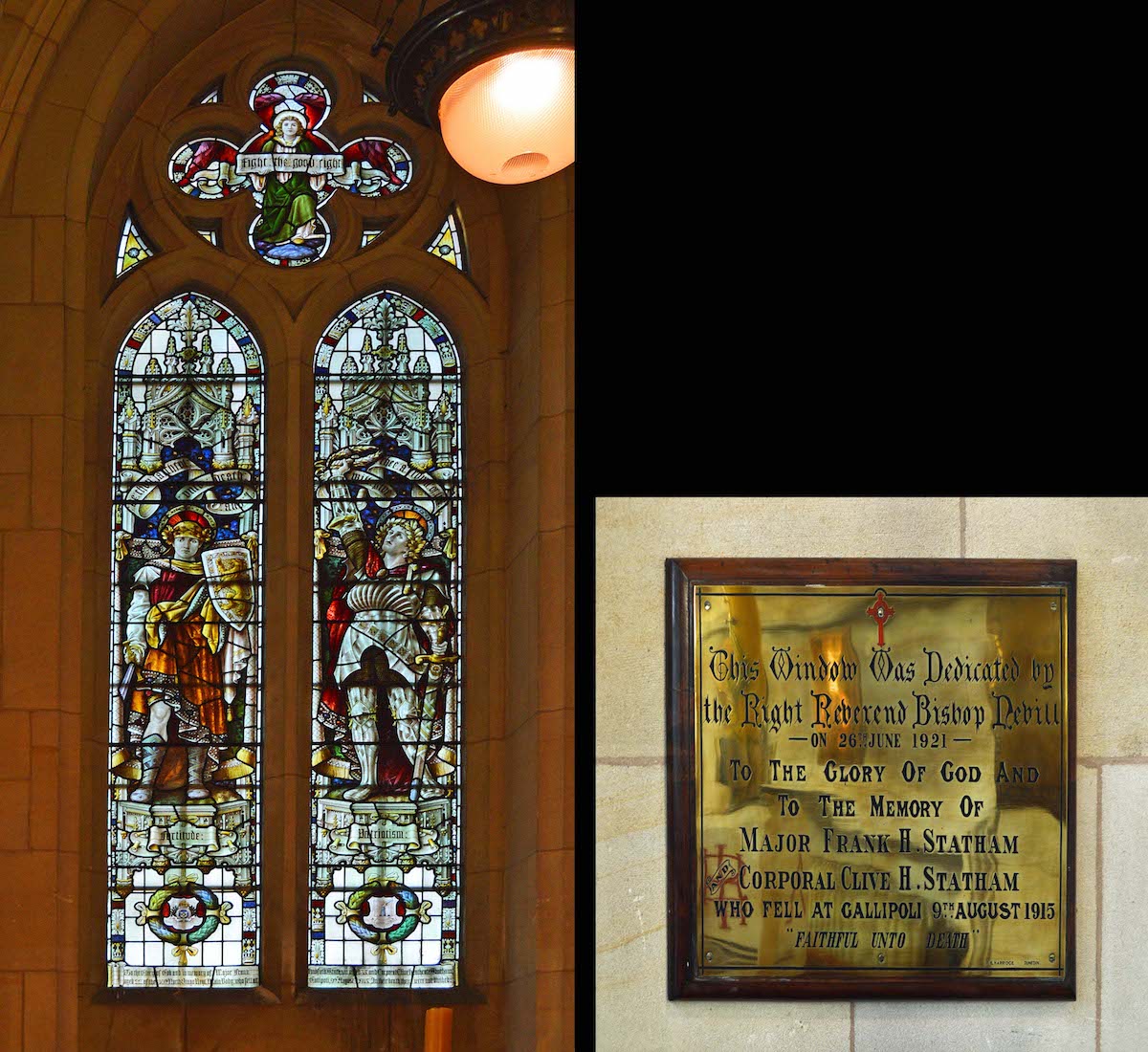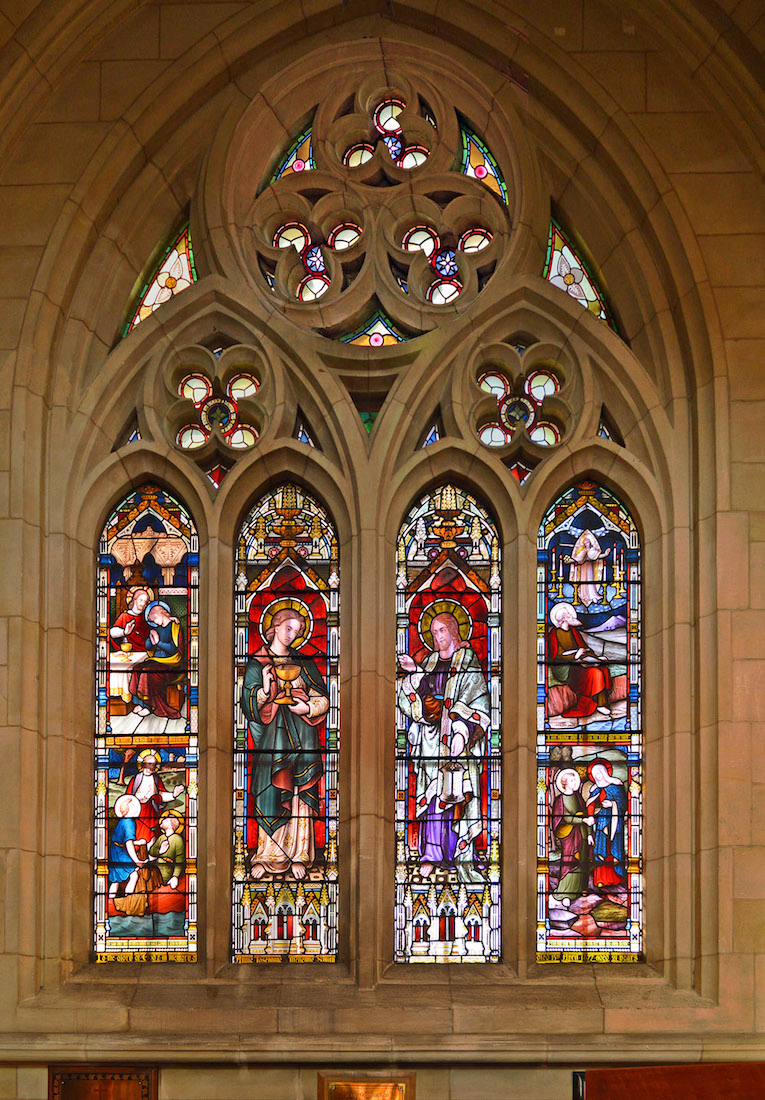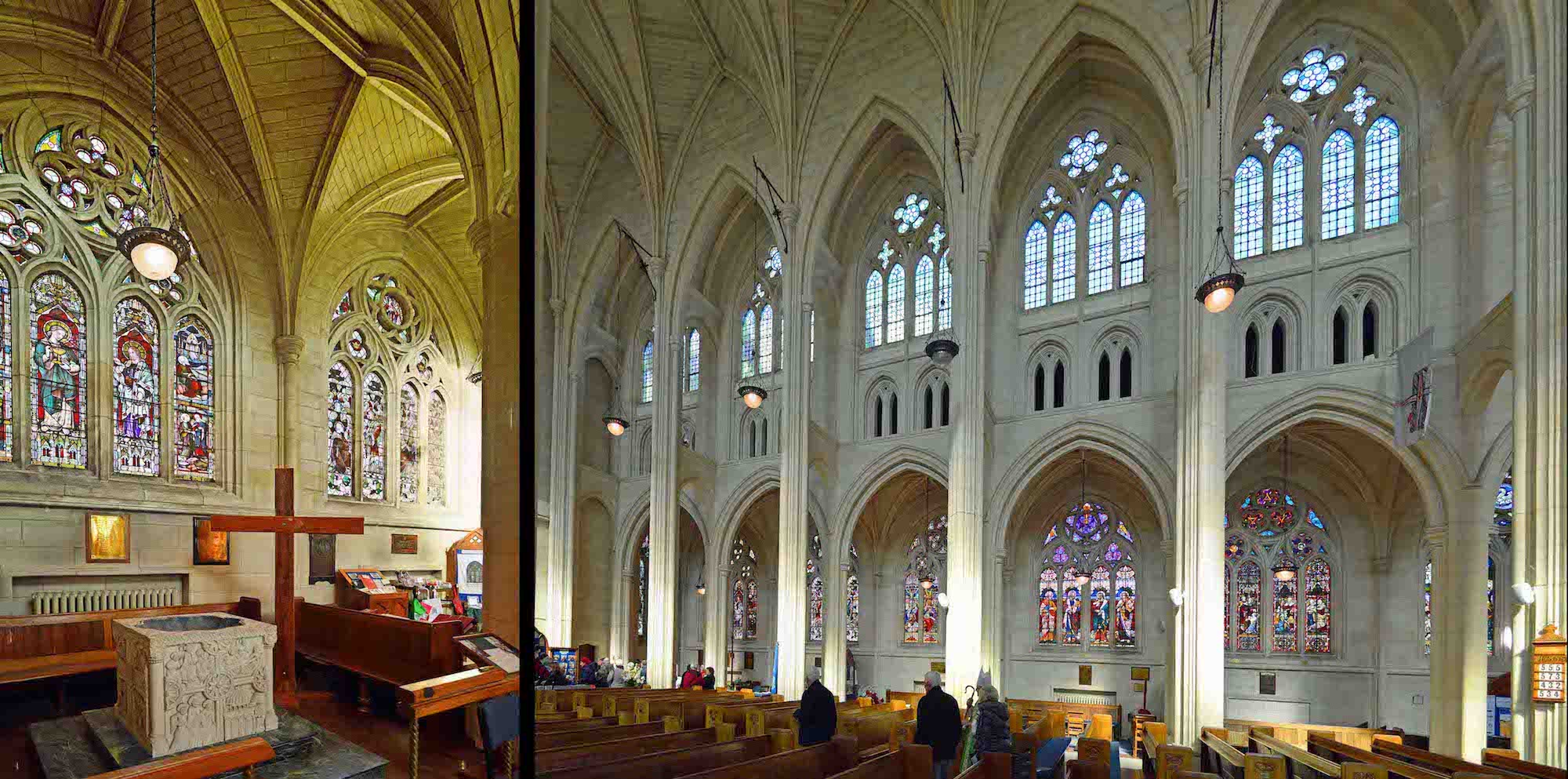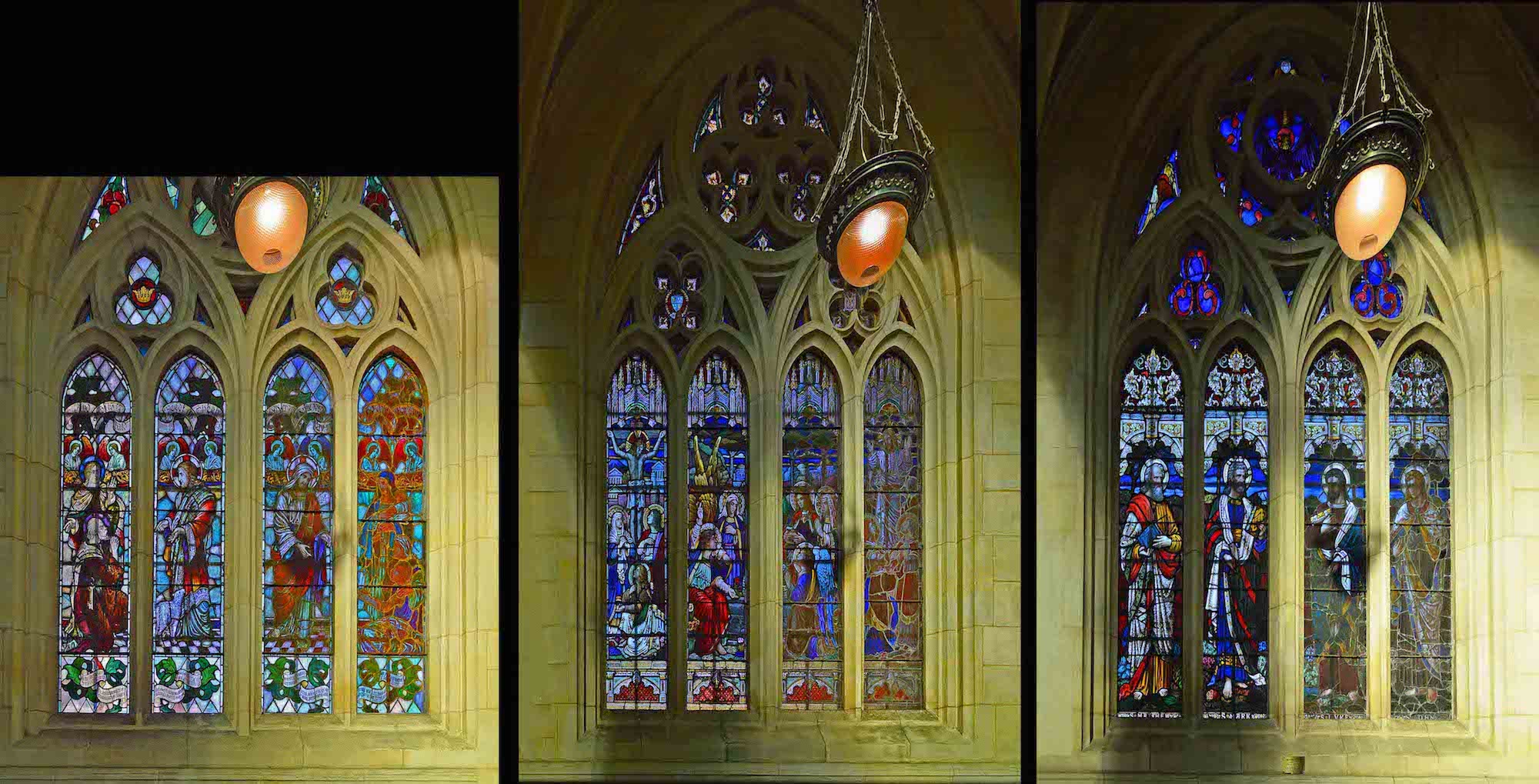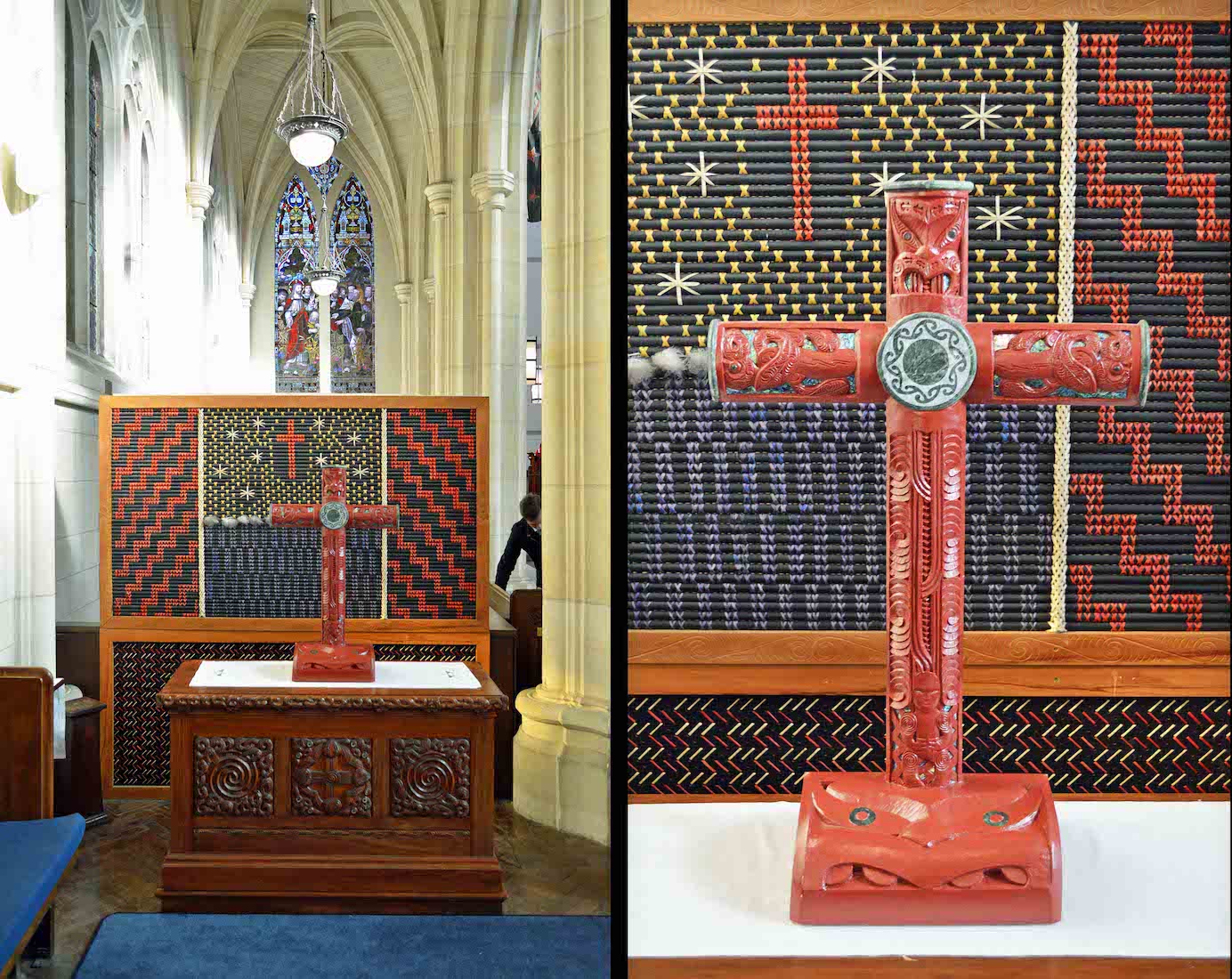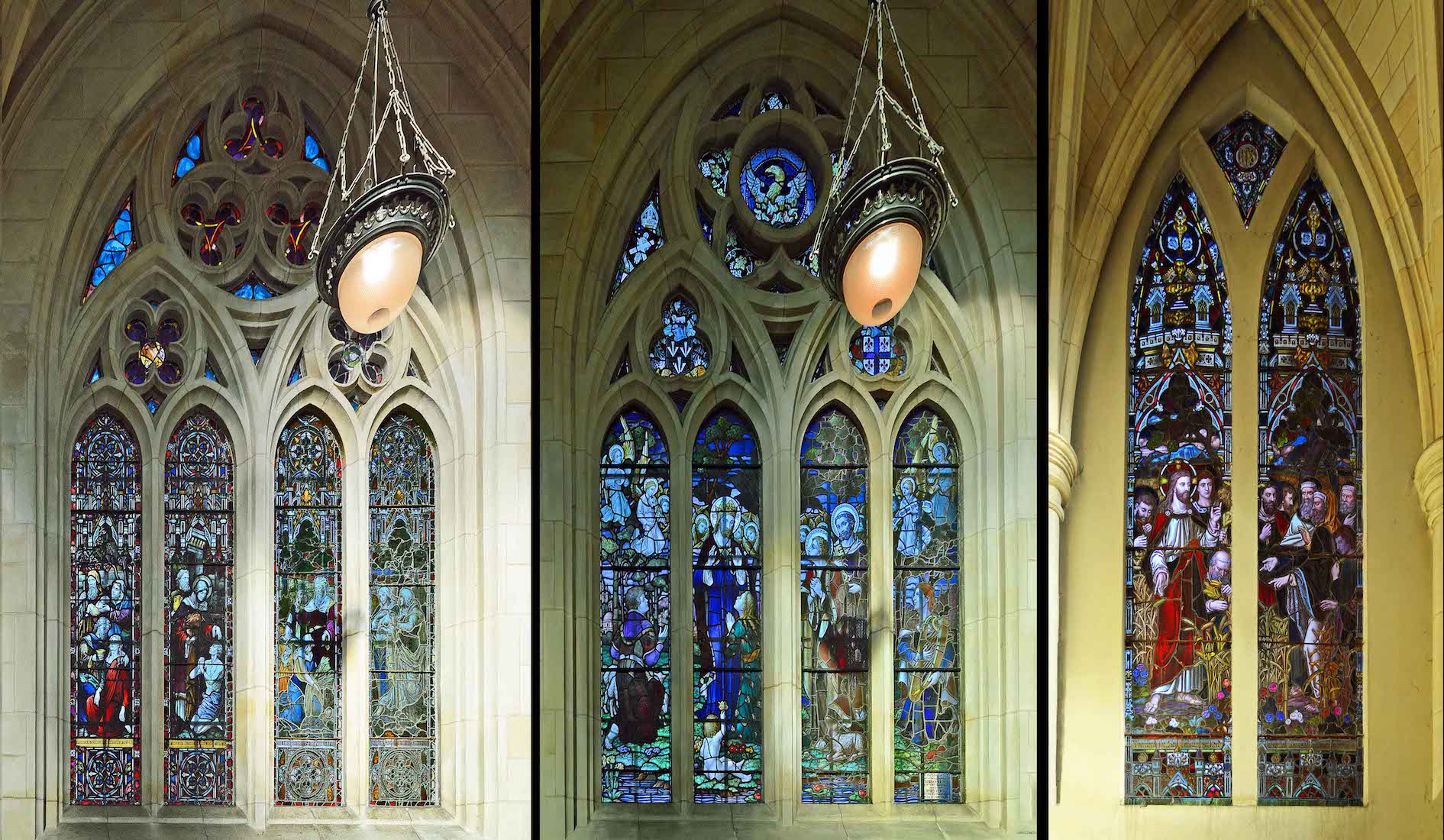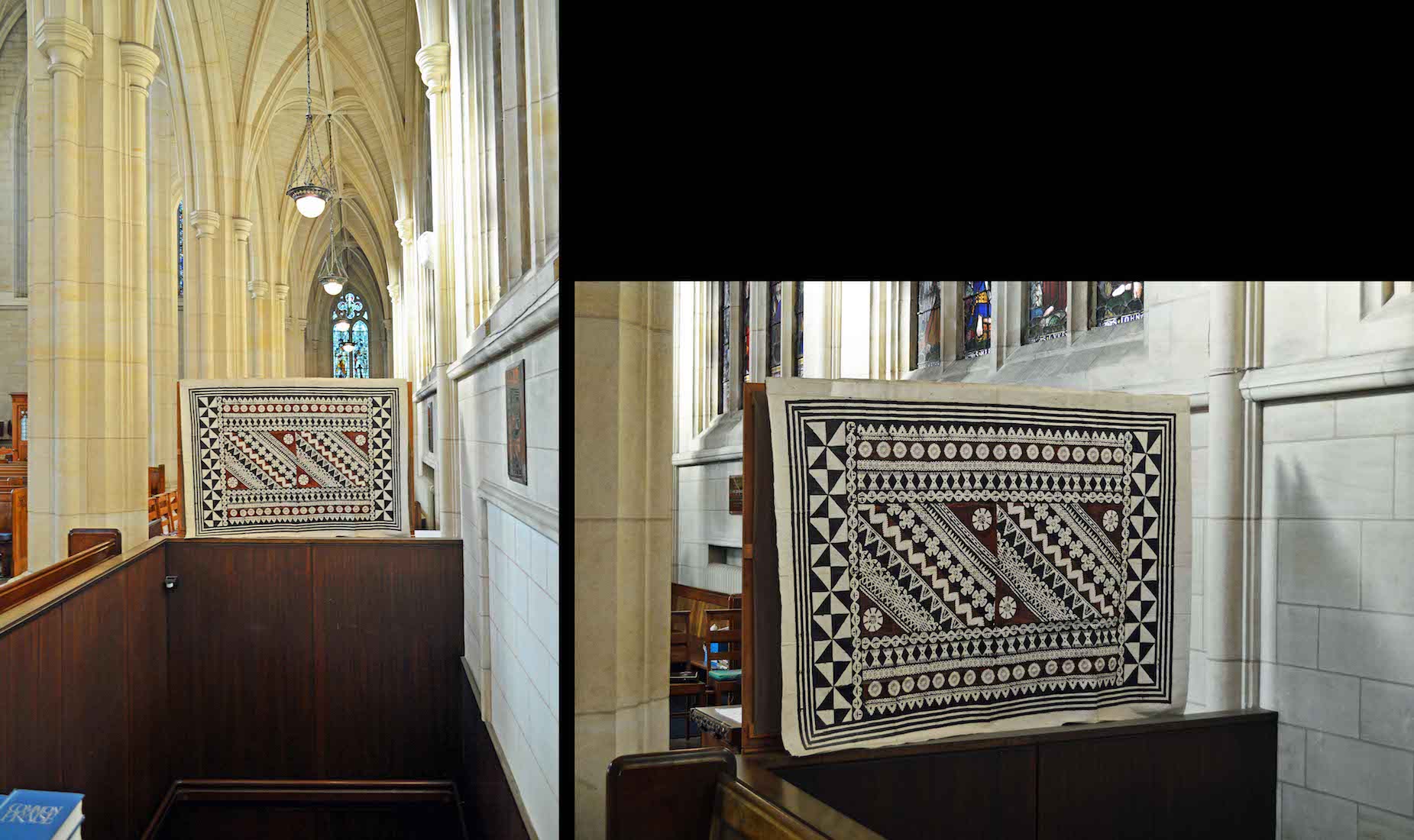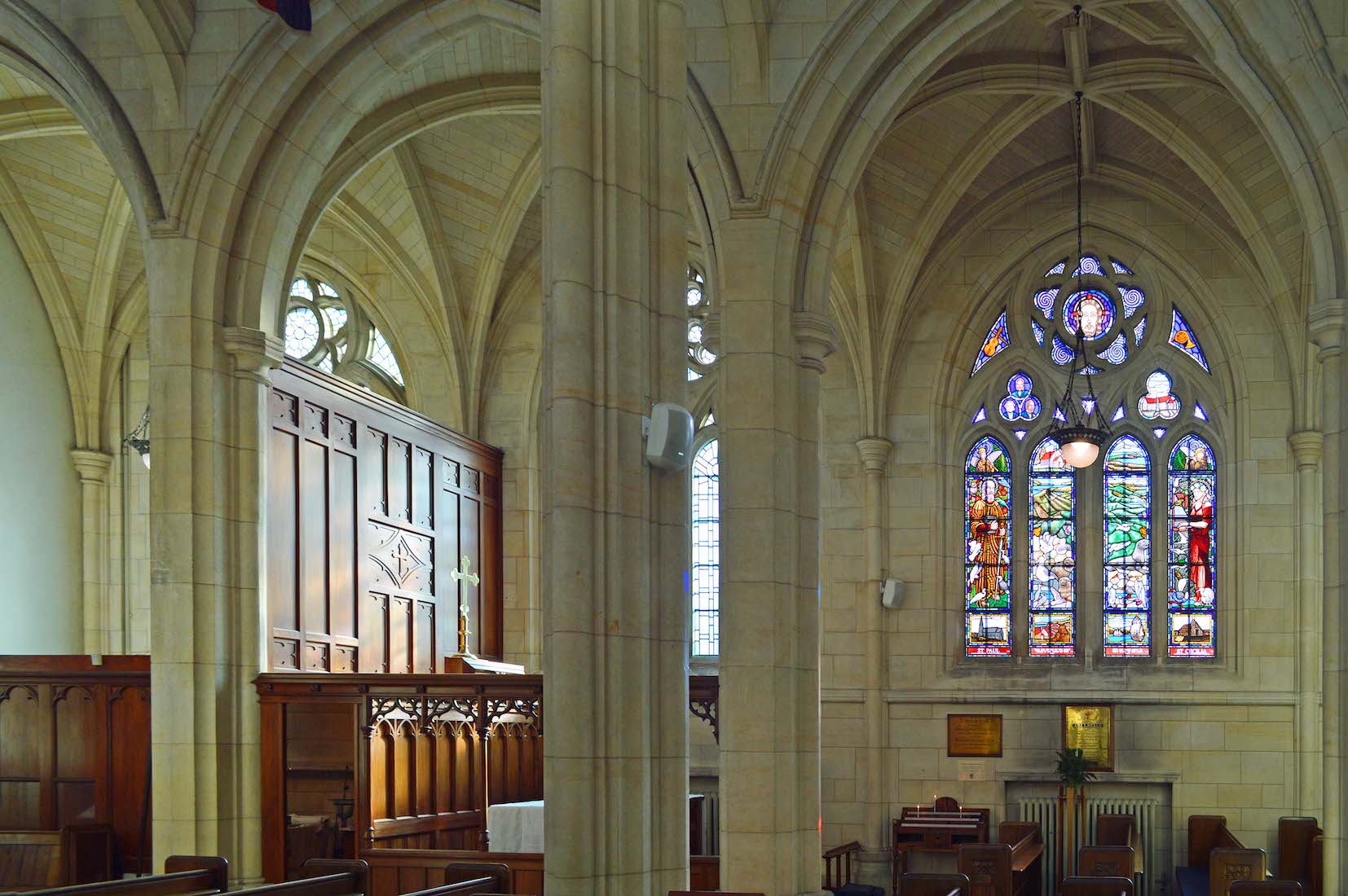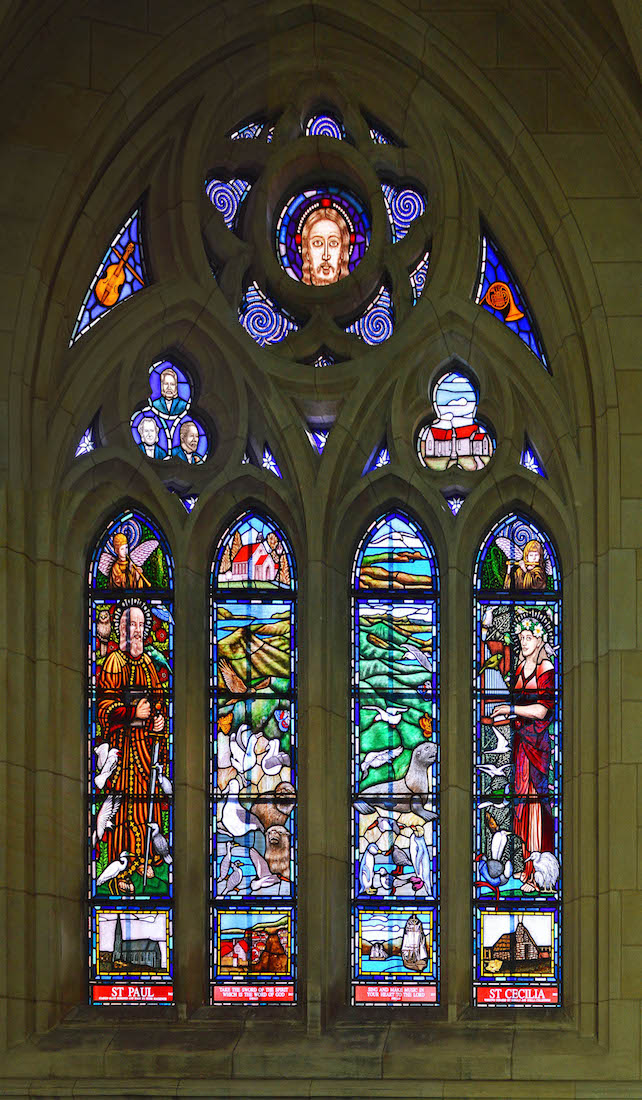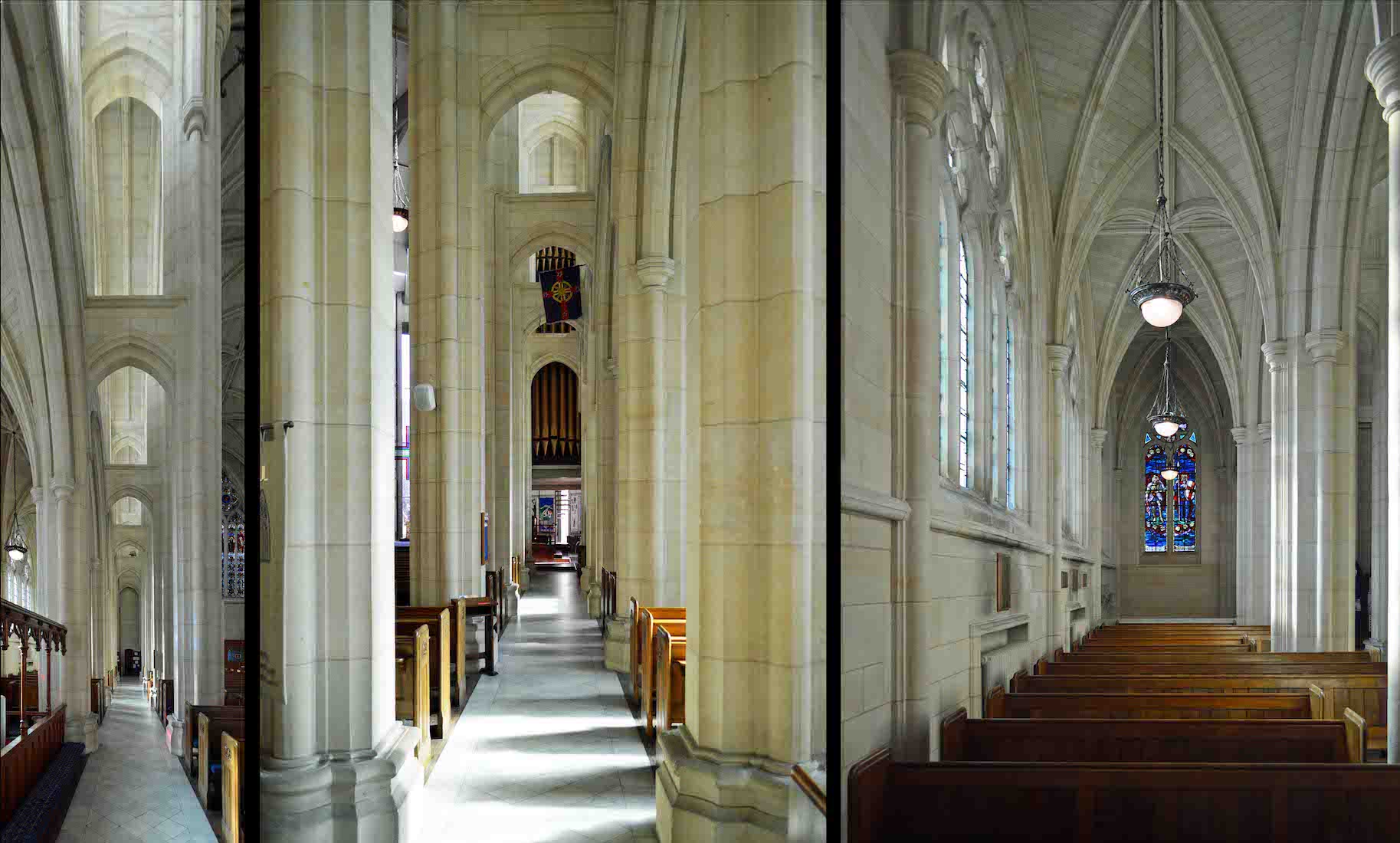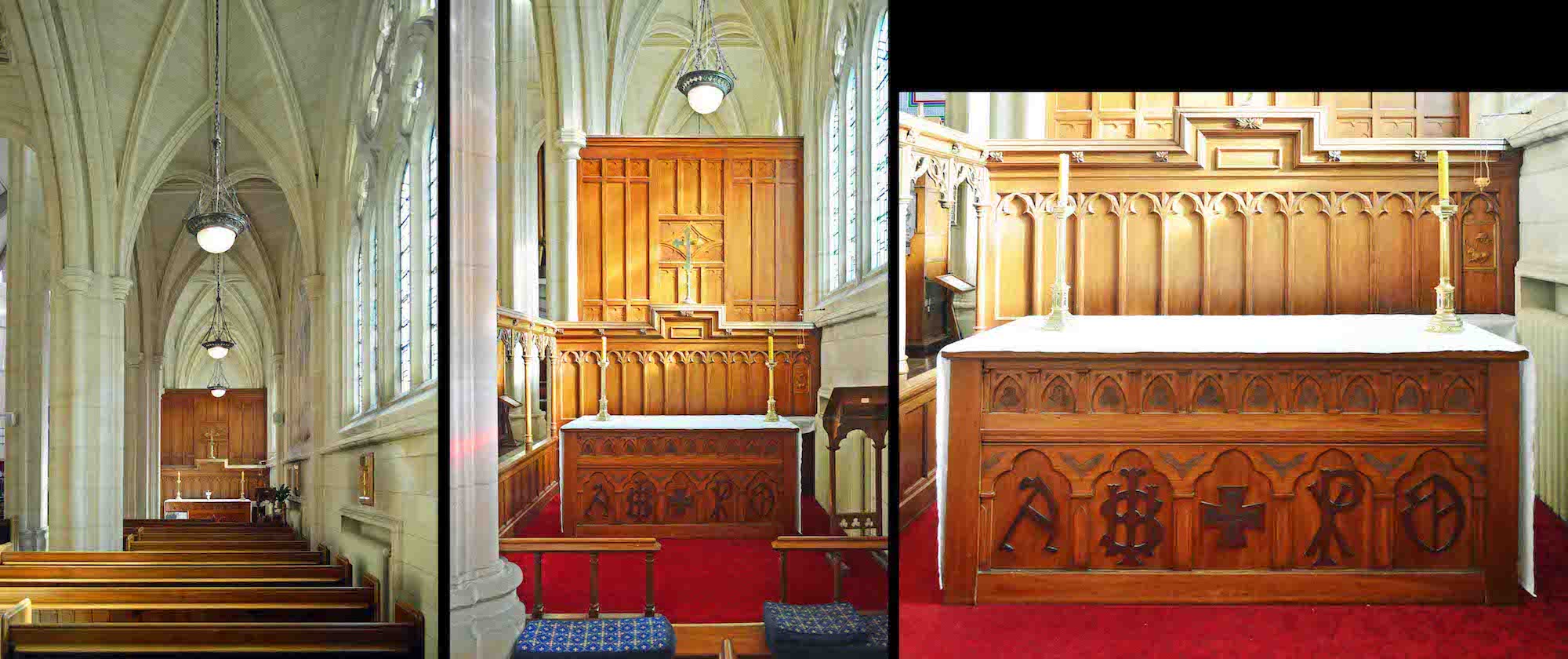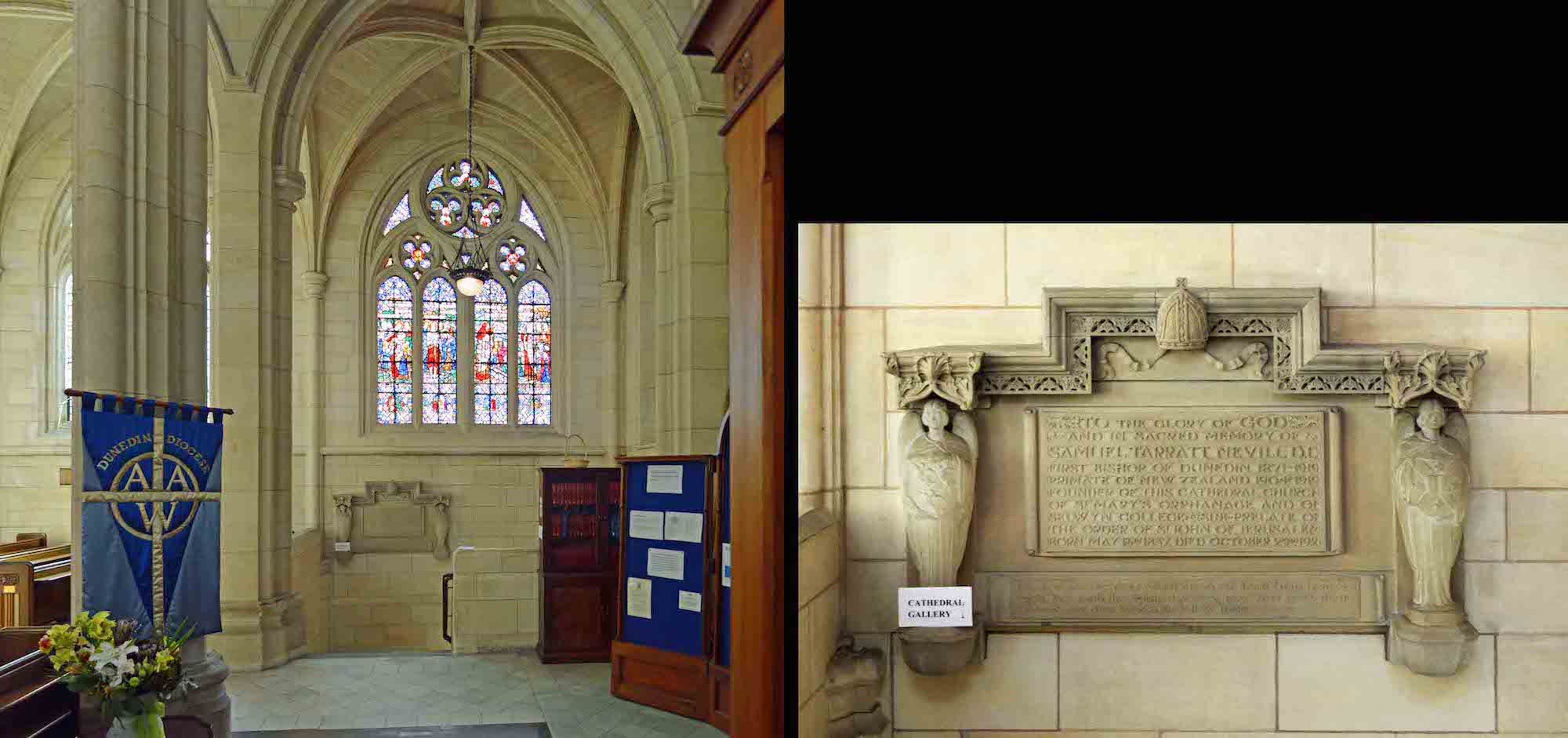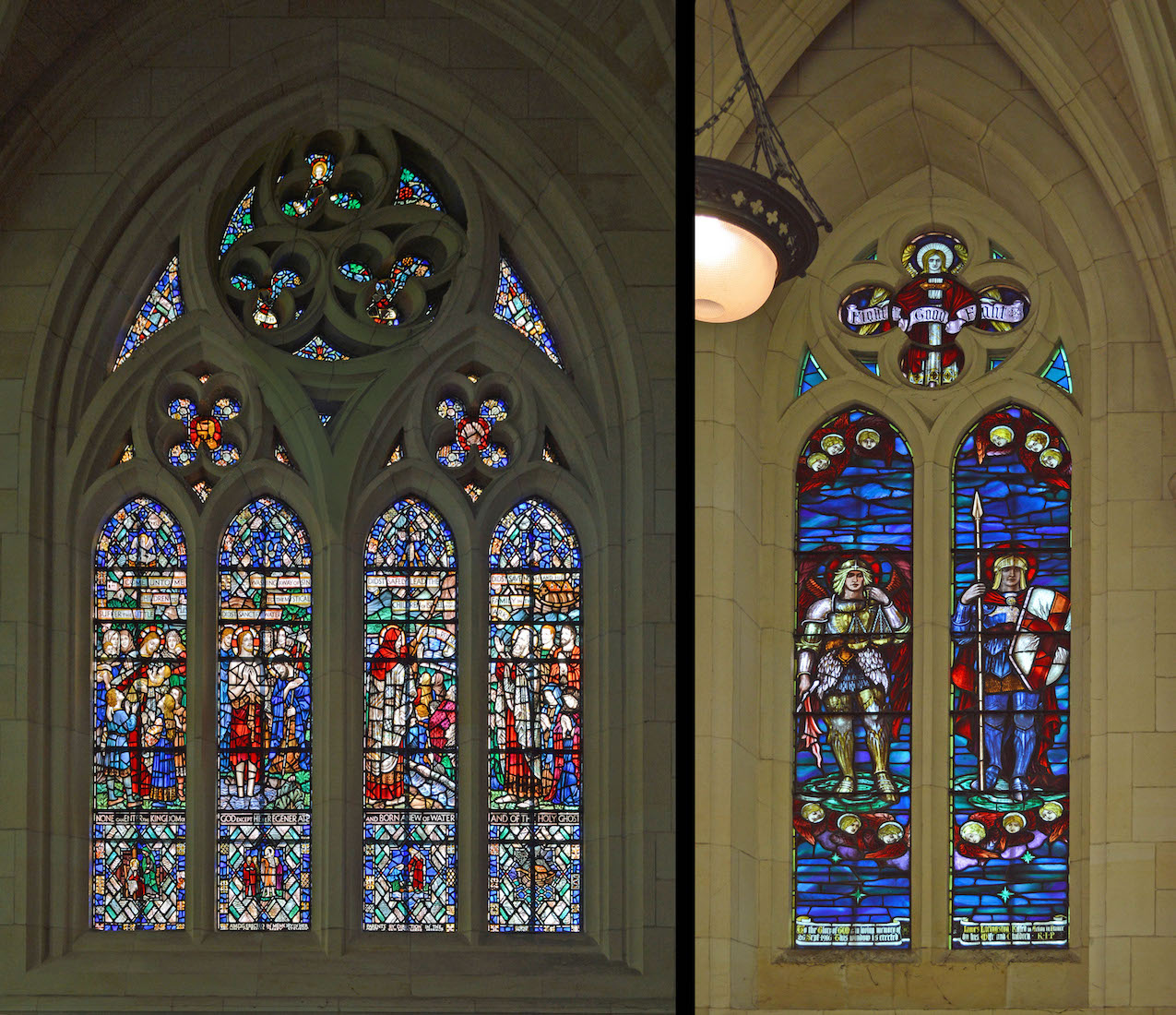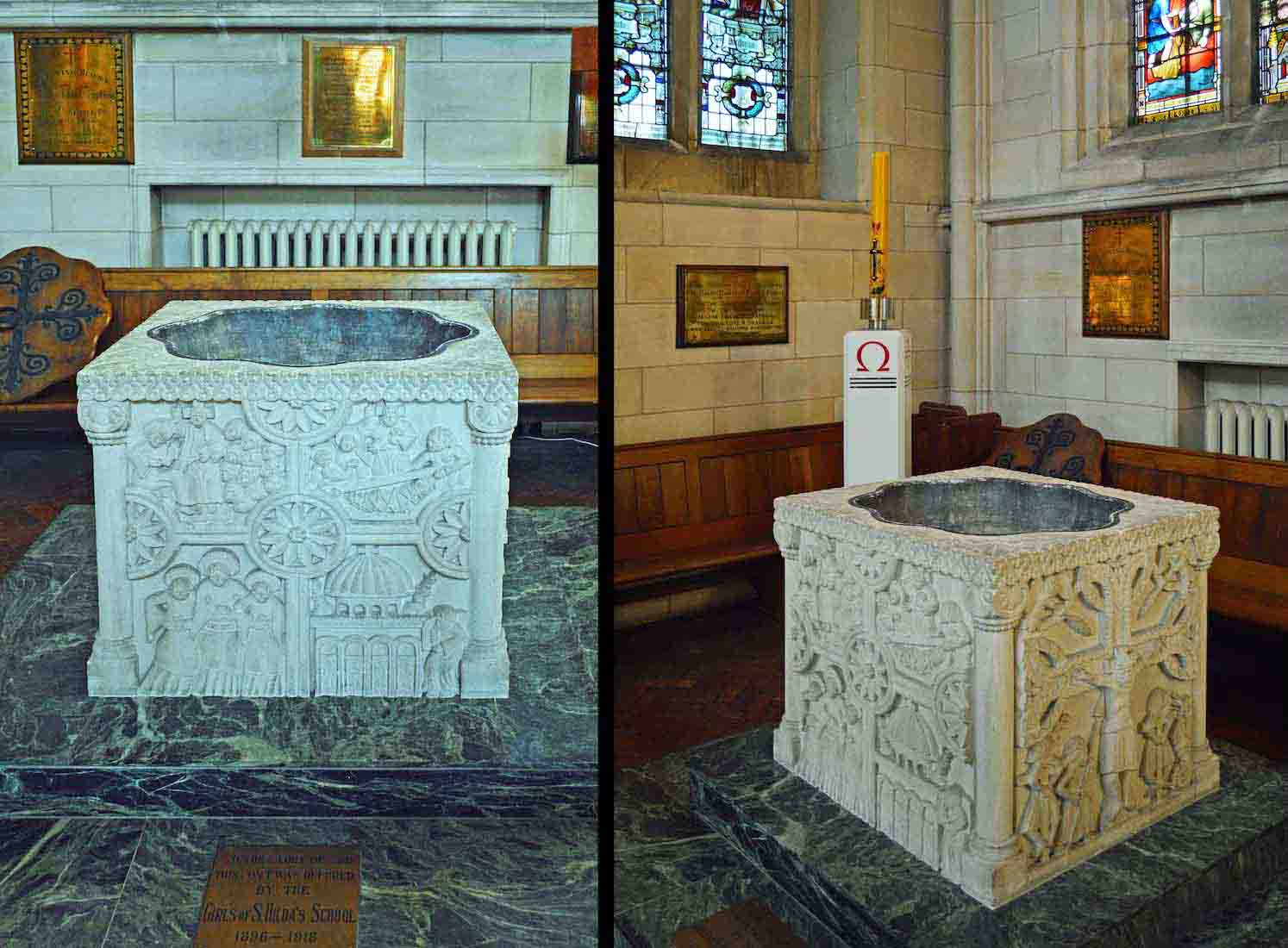
The font is made of Oamaru sandstone. It was carved by local stonemaseon Mr Shanks, and is a copy of a very ancient font in the Priory Church in Lenton in England. The panels depict Christ’s own baptism with water and the Spirit, and scenes of his death and resurrection. The steps of the font are West coast marble – greenstone or ‘pounamu’. PLAN
22. BAPTISTRY ITEMS AND PEW PLATE

The brass plaque reads: ‘To the glory of God this font was offered by the Girls of St Hilda’s School 1896–1918’. The decorated font cover sits on the pew behind. Nearby is an example of the carving of the pew ends with a memorial brass plate.
23. WEST WINDOW OF THE BAPTISTRY
There are two windows facing in to the baptistry. This window on the West wall is called the Statham Window. It depicts Fortitude and Patriotism, and is given in memory of Major Frank H. Statham and Corporal Clive H. Statham who fell at Gallipoli 9th August 1915.
24. NORTH NAVE ST JOHN WINDOW
This window above the baptistry is the St John Window, originally in the old St Paul’s. From left: • John with Jesus at the Last Supper, and Jesus approaching James and John. • St John with a chalice. • Jesus with a lantern – Light of the World (a later addition to the original). • John on the island of Patmos, and John after the Crucifixion taking Mary to his own home.
25. NORTH NAVE WALL
In these views we see the six stained glass windows of the North nave, and at top the clerestory windows with the small arches of the triforium layer below.
26. NORTH NAVE WINDOWS
Depicted here are the second to fourth windows. From left to right: • Gould (St Peter) Window: At left Jesus ministers to a woman with her child, and a crippled man. At right Jesus gives Peter the Keys of the Kingdom. • The McKenzie Window. The theme is ‘From Crucifixion to Ascension’. • The Harrop Window shows the Four Evangelists. It came from a demolished City of London church.
27. PRICE ALTAR AND PARATA CHAPEL
The altar was a gift made in 1934 in memory of Ernest Price, a generous benefactor to the Cathedral. The chapel is called the Parata Chapel. The Maori carving was the work of Auckland carver T. Hall. The tukutuku panel behind was created by local craftspeople. A communion service of Holy Communion is celebrated weekly here in the Maori language.
28. FURTHER NORTH NAVE WINDOWS
These are the fifth and sixth windows along the North nave wall, and the window above the Porch door. From left we see: • Two pairs of lights: at left feeding the hungry and clothing the destitute (‘Inasmuch as ye have done it ... ’), and at right, Ruth and Naomi. • The Resurrection morning. • Nichols Window. Jesus teaching that he is Lord of the Sabbath. This window was transferred from the old St Paul’s.
30. ACROSS TO THE NEVILL CHAPEL
We continue our exploration of the nave by crossing over to the South side. We see the Nevill Chapel, one of the two stained glass windows on this side, and some of the arches enclosing the South nave aisle.
31. SOUTH NAVE DUNEDIN WINDOW
This window was created and placed here in 2012. It shows St Paul, the patron saint of the Cathedral, and St Cecilia, patron saint of music. There is reference to the three main cultural strands making up the community – Maori, Pakeha and Chinese, and scenes of the local natural beauty.
32. SOUTH NAVE AND AISLE
The South nave aisle is very similar to that in the North nave, bounded by an avenue of tall stately columns.
34. THE SOUTH NAVE WALL
Following the South wall back from the Nevill Chapel, we observe that, like the North wall, it is lined with brass plates. Such plates tell us something of the history of the Cathedral.
35. SOUTH NAVE MEMORIALS
From the left: • Plate in memory of Edmund Robert Nevill M.A. who was Vicar of the Cathedral District 1915 – 1932, and died in 1935. [Son of Bishop Nevill] • Worshipper and benefactor George Gray Russell, died 1919. • Alfred Abner Finch served the Cathedral for many years, died 1930. • James and Catherine Walcott, died 1880 and 1913.
36. CRYPT WEST ENTRANCE
At the West end of the the South nave there is another set of stairs down to the crypt. On the wall is a tablet remembering Samual Tarratt Nevill D.D., first Bishop of Dunedin 1871–1919, Primate of NZ 1904–1919.
37. SOUTHWEST NAVE WINDOWS
There are two further stained glass windows in the nave – in the Southwest corner. The window at left has text across the bottom: ‘None can enter the Kingdom of God except he be regenerate and born anew of water and the Holy Ghost.’ The window on the West wall is a further War Memorial Window, and shows the archangel St Michael and St George.
38. WEST NAVE DISPLAYS
The pin boards at left show current news items and notices. The framed sheet shows items relating to the first 50 years of St Paul’s, from 1863 to 1913. And at right is a framed early photograph of the interior of St Paul’s.
39. CRYPT GALLERY
One is never quite sure what to expect of a cathedral crypt! But going down the stairs to this crypt we find a bright informative gallery of photographs and paintings of the history of the Cathedral and of those who have served here.
40. BRAITHWAITE MEMORIAL, CRYPT
In a corner of the crypt stands the Braithwaite Memorial ‘Boy Choristers Award’ with a list of names dating from 1953. It is interesting that in more recent times there have been some girl recipients!


